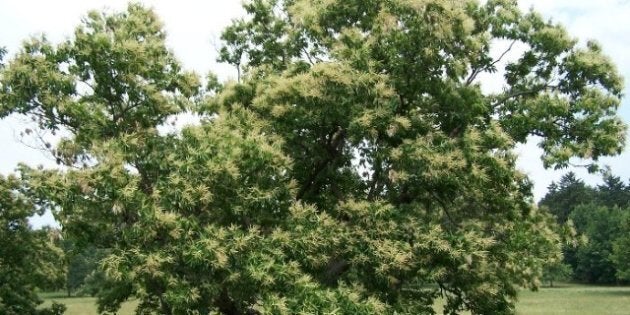
A colleague told me that his toddler was wandering through a neighbourhood park picking up twigs and sticks, brandishing them as tools for digging, poking, and tapping. Suddenly the boy stopped and pointed excitedly to the canopy of branches above. "Look papa! Sticks come from trees!"
Mentally reconnecting fallen branches to their home on the trunk is obvious to an adult, but many of us have lost our profound sense of wonder about the interconnected web of life that surrounds us. This is especially true when it comes to the plant world.
Trees filter pollutants, absorb carbon dioxide, and breathe out life-giving oxygen, and plants provide food and medicine. However, most folks are largely oblivious to our photosynthesizing companions. This has led some researchers to examine "plant blindness," a condition whereby we cannot see the forest or the trees.
In 1998, American botanists James Wandersee and Elizabeth Schussler defined plant blindness as "the inability to see or notice the plants in one's own environment," which leads "to the inability to recognize the importance of plants in the biosphere, and in human affairs." This prognosis rings true in an age when most youngsters can identify hundreds of corporate logos, and branded products but cannot name the plants, and trees in their backyards.
Why are we suffering from a nagging case of plant blindness? There is no simple scientific answer, but Wandersee and Schussler argued that plants don't capture our attention like animals, and other stimuli. To the human eye, they are largely static. Thus we tend to lump plants together into a green backdrop, failing to distinguish between the millions of blades of grass, or multitude of plant species.
Show someone a photo of a lush forest with a grizzly bear and ask what's in the picture. Most will answer, "a bear." Add a spotted owl to the scene, and the response might become, "a grizzly bear under the watchful eye of an owl." What you are unlikely to hear is a description of the flora accompanying the charismatic fauna.
Part of the problem may be related to the overwhelming amount of data our eyes send to our brains. Danish author Tor Nørretranders estimates that the human eye generates more than ten million bits of data per second. Our brain extracts only about 40 bits of data per second, and only 16 bits reach our conscious vision, and attention. Unfortunately, nature's greenery tends to be drowned out in a visual flurry of noise, and shinier items of interest.
Nørretranders also found that people who have had meaningful educational, and cultural experiences with plants are more likely to notice greenery.
How do we reconnect with nature, and learn to give plants their due? The answer is simple. People, especially children, need to connect with nature in their everyday environment, and we need to bring more to our neighbourhoods, public spaces, and backyards. It might surprise you, but most urban spaces are already jam-packed with natural wonders.
After volunteering in an urban apple orchard at the Spadina Museum in Toronto, Laura Reinsborough began seeing the world through "fruit goggles." Once she became familiar with fruit-bearing trees in the city, she suddenly noticed them everywhere -- cherries, plums, crabapples, pears, grapes, and walnuts. This largely untapped urban bounty spurred her to found Not Far From the Tree, a group that has organized volunteers to help harvest more than 14,000 kilograms of fruit from hundreds of backyard trees over the past four years.
If you want to help bring nature to your community, join one of the many groups working to enhance it. Local efforts to restore wetlands, forests, parks, and public spaces provide great opportunities to get hands-on outside time, and boost your community's natural wealth.
Earth Day, on April 22, offers an ideal time to get started by planting a tree, or making your community cleaner and greener. In the Greater Toronto Area, check out the David Suzuki Foundation and RONA's Urban Reforestation tree-planting event in the Rouge -- the future site of what I hope will become Canada's first urban national park. For other nature-restoring events near you, see the listings on Earth Day Canada's website.